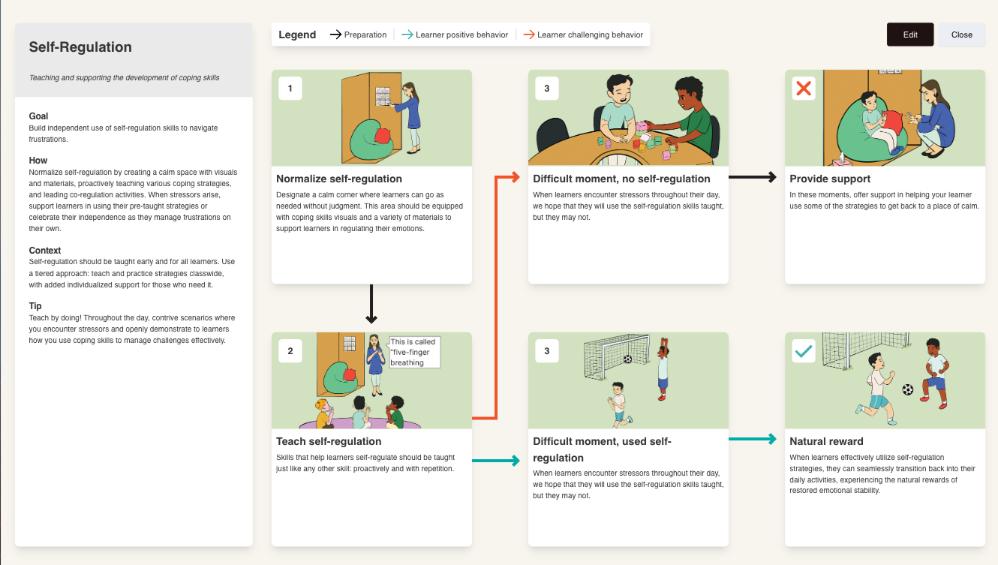
Self-Regulation
Teaching Coping Skills and Calm-Corner Routines for Lasting Independence
Self-Regulation teaches learners to recognize stress, choose coping strategies, and return to task—vital for classrooms, therapy rooms, and home “calm corners.” By modeling deep-breathing, offering visual emotion charts, and guiding co-regulation, BCBAs, special-education teachers, and parents can reduce meltdowns, boost focus, and build lifelong resilience in autistic and other neurodivergent learners.
Why use Self-Regulation strategies?
- Lower stress and fewer behavior escalations. Studies show explicit coping-skills instruction and calm-space visuals significantly cut the frequency and intensity of challenging behaviors.
- Improved academic engagement. Learners who self-regulate return to tasks faster after setbacks, leading to higher on-task time and better learning outcomes.
- Generalization and long-term resilience. Practicing coping skills across whole-class, small-group, and individual tiers helps strategies transfer to playgrounds, community outings, and home routines.
What you’ll unlock inside BIP Visualized:
- A step-by-step overview of how to use this evidence-based strategy
- Ability to customize images and descriptions to individualize for your learner
- Aligning, printable visual resources to support teaching and generalization
- Ability to add this visual strategy and more to build a custom-made visual BIP tailored to your learner’s needs
Start your free trial to access the Self-Regulation strategy and build a personalized, team-friendly visual Behavior Intervention Plan today.
Access Resource
